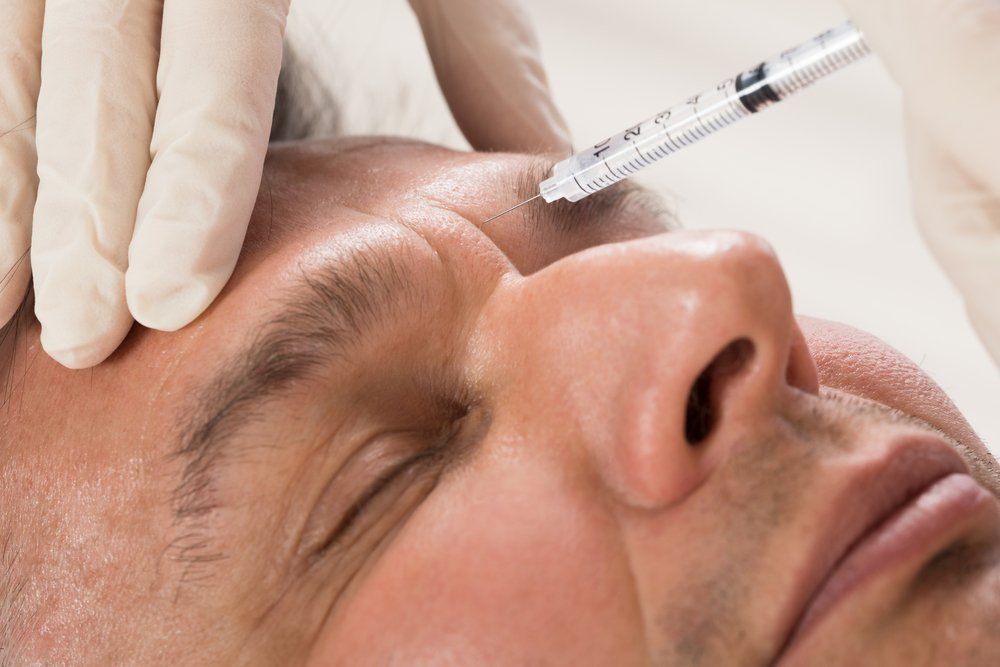- Case-Based Roundtable
- General Dermatology
- Eczema
- Chronic Hand Eczema
- Alopecia
- Aesthetics
- Vitiligo
- COVID-19
- Actinic Keratosis
- Precision Medicine and Biologics
- Rare Disease
- Wound Care
- Rosacea
- Psoriasis
- Psoriatic Arthritis
- Atopic Dermatitis
- Melasma
- NP and PA
- Skin Cancer
- Hidradenitis Suppurativa
- Drug Watch
- Pigmentary Disorders
- Acne
- Pediatric Dermatology
- Practice Management
- Prurigo Nodularis
- Buy-and-Bill
Article
DAXI appears safe, effective
Author(s):
Collective results from the SAKURA phase 3 clinical trial program investigating daxibotulinumtoxinA for injection for the treatment of moderate-to-severe glabellar lines show that the neuromodulator provides generally safe and long-lasting results.

Collective results from the SAKURA phase 3 clinical trial program investigating daxibotulinumtoxinA for injection (“DAXI”, Revance Therapeutics) for the treatment of moderate-to-severe glabellar lines show that the neuromodulator provides generally safe and long-lasting benefit with one treatment consisting of five injection points: two in each corrugator muscle and one in the procerus muscle.
SAKURA 3, which was an open-label phase 3 safety study investigating DAXI for treatment of moderate-to-severe glabellar frown lines, enrolled 2691 patients who received up to three repeat treatments at an interval of 36 weeks. Overall, patients received a total of 3830 injections of DAXI 40 U (8 U per point).
“This is the largest clinical trial ever conducted investigating aesthetic treatment with a neuromodulator," says Sabrina Fabi, M.D., who was an investigator. "The effcacy results paralleled those seen in the randomized, placebo-controlled SAKURA 1 and SAKURA 2 clinical trials showing that DAXI was very effective at one month and was associated with prolonged benefit, typically persisting five to six months post-injection,” says Dr. Fabi, associate research director, Cosmetic Laser Dermatology, San Diego.
SAKURA 3 was a prospective, 84-week study. Eligible patients had moderate-to-severe glabellar lines judged using the four-point Investigator Global Assessment-Frown Wrinkle Severity Scale; baseline severity was rated “moderate” in approximately two-thirds of the enrolled cohort. Approximately 12% of patients enrolled in SAKURA 3 had been previously treated with DAXI in SAKURA 1 or 2. A total of 40% of all subjects had been treated previously with another botulinum toxin product.
Patients received DAXI 40 U. Subjects selected for retreatment could receive it no sooner than 12 weeks later and once their frown severity score had returned to baseline. These patients were eligible for a third injection using the same criteria. Follow-up visits were scheduled at weeks 1, 2, 4 and every four weeks through week 36 after the first and second injections and through week 12 following a third injection. A total of 2,380 patients received a first DAXI injection, 882 patients were treated with a second cycle, and 568 patients received a third DAXI injection in SAKURA OLS.
A 2-point composite response at maximum frown at week four was achieved by 73% of patients after the first treatment cycle, which was nearly identical to the results in SAKURA 1 and 2. In SAKURA 3, the response rates were 78% after cycle two and 80% after cycle three.
“The majority of patients in SAKURA 3 were rated prior to treatment as having either moderate or severe glabellar lines. That means they would have to improve to “none” to achieve a 2-point composite response, and that is a very high bar to cross,” Dr. Fabi says.
At week 24 after DAXI injection, approximately one-third of patients had a wrinkle severity score of none to mild. Using a Kaplan-Meier time to event analysis, the median time to loss of none or mild rating was 24 weeks. Median time to return to baseline severity was approximately 28 weeks. Patient satisfaction was high, she says.
Adverse events were mild, transient and mostly limited to local reactions that would be expected with any needle injection, (eg, injection site pain and erythema), as well as headache that is widely reported with neuromodulator injections for treatment of glabellar lines. The rates of injection site pain, erythema and headache in SAKURA 3 were all <6%.
Overall, 1.3% of patients experienced eyelid ptosis, and the rate of eyelid ptosis per treatment was 0.9% per treatment. Results from SAKURA 1 and SAKURA 2 were reported in articles published online in Plastic and Reconstructive Surgery and the Journal of the American Academy of Dermatology. The two identically designed studies included a total of 405 patients who received a single treatment with DAXI 40 U.
The primary endpoint analysis showed that 73.8% of DAXI patients but only 0.5% of controls achieved a two-point composite response at week 4. The responder rate in the DAXI group was the same whether patients had moderate or severe glabellar lines at baseline. At week 4, 97.5% of subjects were rated as None or Mild by the investigator, and 91.1% when rated by the subjects at the 24-week follow-up visit. The median time to return of baseline severity was approximately 27 weeks.
The incidence of eyelid ptosis associated with DAXI in SAKURA 1 and 2 was 2.2%.
DAXI has unique characteristics compared with other neuromodulators that are approved for aesthetic use. Although all of the products contain the same 150 kDa core neurotoxin protein (botulinum toxin type A), unlike onabotulinumtoxinA (Botox Cosmetic) and abobotulinumtoxinA (Dysport), DAXI is highly purified and free of accessory proteins. In contrast to both the latter two competitors and incobotulinumtoxinA (Xeomin), DAXI is formulated with a patented stabilizing peptide excipient and is free of animal-derived components and human serum albumin.
Disclosures:
Revance Therapeutics submitted a Biologics License Applications to the FDA for DAXI in the treatment of moderate-to-severe glabellar lines in November 2019.
Dr. Fabi is an investigator for Allergan, Croma, Galderma, Merz, and Revance and has stock in Allergan and Revance.





